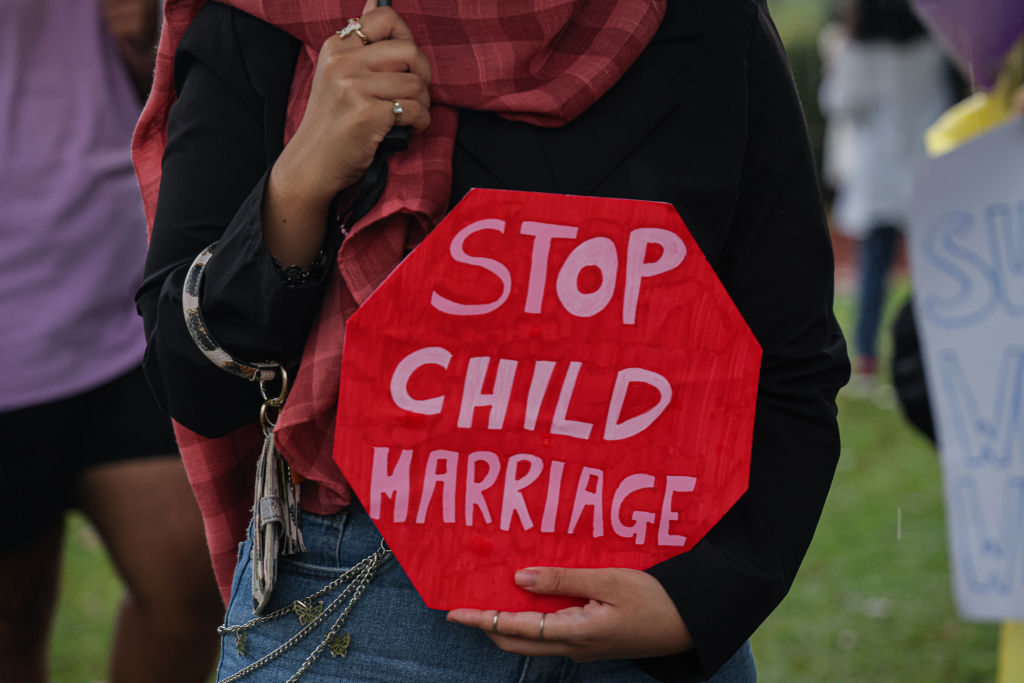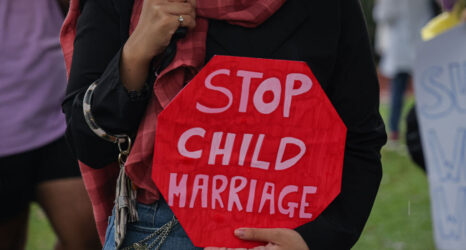Adolescent girls forced into marriage are at increased risk of sexual exploitation, violence and teen pregnancy.

Globally, one in five girls is forced into marriage before they turn 18, putting their health — and often their very lives — at risk. The origins of child marriage are deeply rooted in gender inequality, which seeks to lessen the value and participation of women and girls in society. Studies have shown that rates of child marriage tend to increase following conflict-related displacement. The global COVID-19 pandemic has profoundly impacted adolescent girls, putting them at higher risk of experiencing child marriage due to school closures, disruptions to health and protective systems, and increased economic stress within households.
Also worsened by conflict and other crises is food insecurity. The United Nations World Food Programme estimates that close to 500 million of the world’s 828 million hungry live in areas affected by conflict.
Findings from new research in southeast Zimbabwe highlight the interconnected nature of child marriage and food insecurity. Adolescent girls may be forced into marriage to ease the household burden of “another mouth to feed” or may initiate marriage to escape food-insecure homes. They bear the brunt of the consequences that often put their lives in the balance, with increased risk of sexual exploitation, violence and adolescent pregnancy — complications that are among the leading causes of death for girls aged 15–19 years globally.
Globally, one in five girls is forced into marriage before they turn 18, putting their health — and often their very lives — at risk.
The solutions to these twin scourges are complex. Food assistance programming may ease household stressors, lessening the desire to marry off a daughter. However, it may also contribute to new risks for adolescent girls, encouraging a girl’s marriage to create an extra household entitled to food aid. Cash transfers can help create economic choice, contribute to the dignity of displaced people, and have been linked to reducing early pregnancy and child marriage by mitigating some of the financial constraints of school attendance. However, there needs to be more research on cash interventions that provide basic income to support nutrition and/or sexual and reproductive health needs to ensure child marriage is averted (or the consequences are lessened for already married girls).
During the United Nations General Assembly’s (UNGA) general debate, currently underway in New York, governments present their priorities and discuss the world’s pressing issues. Global food insecurity is high on the agenda, including at a global summit hosted by U.S. President Joe Biden on Sept. 20. Since Russia’s invasion of Ukraine, the U.S. has been very vocal on the devastating impact on food security. In July, the U.S. Ambassador to the U.N., Linda Thomas-Greenfield, wrote: “Make no mistake: people around the world will die from hunger because of Russia’s weaponization of food.” President Biden’s summit followed up on commitments made at an event on food security held by U.S. Secretary of State Antony Blinken at the United Nations in May.
The U.S. has been less vocal, however, on protections for adolescent girls. The last UNGA resolution on child, early, and forced marriage (CEFM), led by Canada and Zambia, and adopted in 2020, had 114 member states as co-sponsors. But one government remained notably absent: The United States, where child marriage remains legal in many states. Some progress has been made across the past four resolutions laying out actions UN member states must take to eliminate CEFM. These include enforcing laws that require a minimum age for marriage and respecting, promoting, and protecting the sexual and reproductive health and rights of all girls subjected to CEFM. The resolutions also recognize how the risks of child marriage are exacerbated in humanitarian situations and how resources such as social protection, education and nutrition are critical to prevent child marriage.
At this year’s UNGA, governments should take stock of progress and ensure universal implementation and expansion of language to address the immediate threats of the global food crisis on adolescent girls. Tackling the food crisis cannot be done in isolation but requires a gendered and interdisciplinary approach by addressing the underlying causes such as conflict, human rights abuses and gender inequality. At UNGA, world leaders have the chance to demonstrate real commitment toward this goal. They must start by placing the rights and needs of adolescent girls front and center.
Read more:





